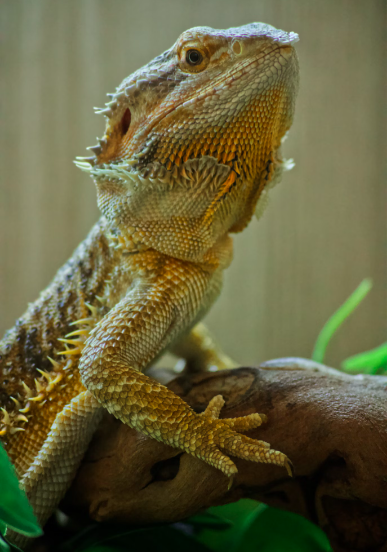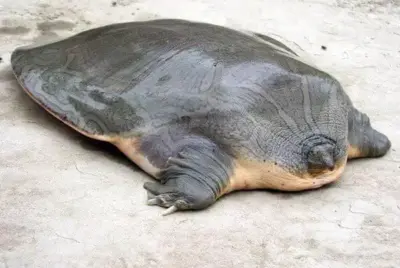What is the Average Bearded Dragon Lifespan? How to Maximize Life
What is the Average Bearded Dragon Lifespan and How to Maximize the Lifespan
As a proud bearded dragon enthusiast, I’m often asked about how to maximize the bearded dragon lifespan. In captivity, with the right care, a bearded dragon can live between 10-15 years. In fact, some have been known to live up to 20 years when given exceptional care.
Today, we’ll be covering the factors that can determine a bearded dragons lifespan, and what you can do to maximize a bearded dragon’s life with proper care.
Factors Affecting Bearded Dragon Lifespan
Various factors contribute to how long your bearded dragon can live, such as genetics, environmental, diet, and health care. We’ll break those down here.
1) Genetic Factors
Genetics plays a significant role in determining the lifespan of bearded dragons. Just like humans, the genetic makeup of a bearded dragon can influence its overall health and longevity. While we cannot alter their genetics, understanding the impact of genetic factors can help us make informed decisions when selecting a bearded dragon and caring for it throughout its life. Here’s a closer look at how genetic factors affect the lifespan of bearded dragons:
Selection of Healthy Bloodlines:
Choosing a bearded dragon from reputable breeders who prioritize the health and longevity of their reptiles is crucial. Responsible breeders employ careful selection practices to breed from healthy individuals with favorable genetic traits. By selecting a bearded dragon from a reputable source, you can increase the likelihood of acquiring a genetically healthy and long-lived companion.
Inherited Health Conditions:
Genetic factors can influence the susceptibility of bearded dragons to certain inherited health conditions. For example, some bearded dragons may have a higher predisposition to metabolic bone disease (MBD), a condition characterized by a deficiency of calcium or vitamin D3. Other inherited conditions can include genetic abnormalities, organ dysfunction, or immune system disorders. Understanding the potential genetic health risks associated with specific bloodlines can help you make informed decisions about breeding and care.
Longevity in Bloodlines:
Some bloodlines of bearded dragons are known for their longer lifespans. Breeders who have focused on breeding for longevity may have established bloodlines that exhibit exceptional health and longevity traits. Researching bloodlines and seeking bearded dragons with a history of long lifespans can be beneficial in selecting a pet with the potential for an extended life.
Genetic Diversity:
Maintaining genetic diversity is essential to ensure the overall health and vitality of the bearded dragon population. Inbreeding and excessive line-breeding practices can lead to a higher risk of genetic disorders and decreased overall fitness. Responsible breeding programs prioritize genetic diversity by carefully managing pairings and introducing new bloodlines when necessary.
While genetic factors influence the potential lifespan of a bearded dragon, it’s important to note that environmental factors and proper care also play significant roles. Even with favorable genetics, inadequate care can limit a bearded dragon’s lifespan, while exceptional care can help them thrive beyond their genetic potential.
When acquiring a bearded dragon, seek reputable breeders who prioritize genetic health and longevity. Additionally, providing a well-maintained habitat, a balanced diet, regular veterinary care, and a stimulating environment can optimize the lifespan of your bearded dragon, regardless of its genetic background.
Understanding the genetic factors at play allows us to make informed decisions and provide the best care possible for our bearded dragon companions. By combining genetic considerations with proper care, we can help ensure a long and healthy life for these captivating reptiles.
2) Environmental Factors
Creating the right environment for your bearded dragon is crucial for ensuring their overall well-being and extending their lifespan. By replicating their natural habitat as closely as possible, you can provide them with a comfortable and stress-free living space. It also can decrease the chance that a bearded dragon bites. Let’s explore the key environmental factors that influence the lifespan of bearded dragons:
Temperature:
Bearded dragons are ectothermic, meaning they rely on external sources to regulate their body temperature. Maintaining an appropriate temperature gradient within their habitat is essential. Provide a basking spot at one end of the enclosure, where the temperature should range between 95-105°F (35-40°C). The cooler end should be around 80-85°F (27-29°C). Use a combination of heating lamps, ceramic heat emitters, and thermostats to ensure consistent and safe temperature levels.
Lighting:
Bearded dragons require both UVB and UVA light for proper calcium metabolism and overall health. UVB light is essential for Vitamin D3 synthesis, which aids in calcium absorption. Use a UVB bulb specifically designed for reptiles and ensure it covers the majority of the enclosure. Provide a light cycle of 10-12 hours of light and 10-12 hours of darkness to mimic their natural day-night rhythm.
Habitat Size:
Bearded dragons need ample space to roam, climb, and exercise. A spacious enclosure allows them to engage in natural behaviors and promotes overall physical and mental well-being. The minimum recommended size for an adult bearded dragon enclosure is 4 feet long by 2 feet wide by 2 feet tall (120 cm x 60 cm x 60 cm). However, larger enclosures are always beneficial, allowing for more natural movements and enrichment.
Substrate:
Choosing the right substrate is important for the health and safety of your bearded dragon. Avoid loose substrates, such as sand or wood chips, as they can be harmful if ingested. Look for reptile carpet, non-adhesive shelf liner, or tiles as safe alternatives. These substrates are easy to clean and reduce the risk of impaction.
Furniture and Hides:
Provide a variety of furniture and hides within the enclosure to create a stimulating and comfortable environment. Use branches, rocks, and artificial plants to create climbing structures and hiding spots. This allows your bearded dragon to exhibit natural behaviors and provides opportunities for exercise and mental stimulation.
Hygiene and Cleanliness:
Maintaining a clean habitat is essential to prevent the buildup of harmful bacteria and fungi. Regularly clean and disinfect the enclosure, including all furniture, hides, and water bowls. Remove any uneaten food promptly to prevent bacterial growth. Regular spot cleaning and deep cleaning on a scheduled basis will ensure a healthy environment for your bearded dragon.
By paying attention to these environmental factors, you can create an optimal habitat for your bearded dragon, which will contribute to their overall health and longevity. Remember to monitor the conditions regularly, make necessary adjustments, and provide a safe and comfortable living space for your scaly companion.
3) Dietary Factors
A balanced and nutritious diet is crucial to the overall health and longevity of your bearded dragon. Poor nutrition can lead to health problems that may shorten their life.
We cover the bearded dragon diet much more in depth here.
4) Health Care Factors
Proper health care is essential for ensuring the well-being and longevity of your beloved bearded dragon. By being proactive in their healthcare routine and addressing any health concerns promptly, you can significantly increase their lifespan. Let’s explore the key health care factors that contribute to the well-being of bearded dragons:
Regular Veterinary Check-ups:
Just like any other pet, regular veterinary check-ups are crucial for monitoring your bearded dragon’s overall health. Schedule annual wellness visits with a reptile-savvy veterinarian who can assess your dragon’s condition, provide necessary vaccinations, and perform routine examinations. These visits can help detect early signs of illness or potential health issues, enabling timely intervention.
Preventive Care Measures:
Alongside regular check-ups, preventive care measures play a vital role in keeping your bearded dragon healthy. This includes providing a proper diet, maintaining optimal habitat conditions, and practicing good hygiene. Regularly monitor the temperature and humidity levels within the enclosure, ensure proper UVB lighting, and clean the habitat regularly to prevent the accumulation of harmful bacteria or parasites.
Disease Prevention:
Bearded dragons can be susceptible to various diseases and infections, so it’s important to take preventive measures. Avoid exposing your dragon to wild reptiles, as they may carry diseases or parasites. Quarantine any new additions to your reptile collection to prevent the spread of potential illnesses. Additionally, practice good hand hygiene before and after handling your dragon to minimize the risk of cross-contamination.
Parasite Control:
Internal and external parasites can pose a threat to the health of bearded dragons. Regularly monitor your dragon for signs of parasites, such as changes in appetite, weight loss, or abnormal behavior. Your veterinarian may recommend regular fecal examinations to check for internal parasites and prescribe appropriate treatments if necessary.
Prompt Attention to Health Concerns:
Be vigilant and observant of any changes in your bearded dragon’s behavior, appetite, or physical appearance. If you notice any abnormalities or signs of illness, such as lethargy, loss of appetite, respiratory distress, or skin lesions, seek veterinary attention promptly. This may sound gross, but check your bearded dragons poop every so often to check their health. Early intervention and treatment can make a significant difference in your dragon’s health and lifespan.
Proper Handling and Interaction:
Handle your bearded dragon with care, using gentle and proper techniques to avoid causing stress or injury. Minimize unnecessary handling and provide a secure and safe environment to prevent accidents or falls that could lead to injury.
Remember, each bearded dragon is unique, and their healthcare needs may vary. It’s important to develop a strong partnership with a knowledgeable reptile veterinarian who can guide you in providing the best care for your specific dragon. By prioritizing their health care and addressing any concerns proactively, you can contribute to a longer and healthier life for your bearded dragon companion.
Optimal Care for a Long Bearded Dragon Lifespan
Housing Conditions
Temperature Control
Bearded dragons are cold-blooded creatures and rely on their environment to regulate body temperature. Maintain a temperature gradient in their habitat, with a basking spot at one end around 95-105°F and the cooler end around 80-85°F.
Space and Cleanliness
Bearded dragons require plenty of space to explore and exercise. A clean habitat is also essential for preventing bacterial and fungal infections.
Diet and Nutrition to Enhance Bearded Dragon Lifespan
Appropriate Foods
A proper, healthy diet is one of the best ways to ensure you maximize your bearded dragons lifespan. Feed your bearded dragon a mix of insects, vegetables, and fruits. A baby bearded dragon’s diet should be about 80% insects and 20% greens, while adults should have 80% greens and 20% insects.
Avoiding Hazardous Foods
Some foods can be harmful to bearded dragons, including fireflies, avocado, rhubarb, and iceberg lettuce. Always do your research before introducing a new food item to their diet.
For more information on bearded dragon diet restrictions with fruits and vegetables, click the links below:
Can Bearded Dragons Eat Tomatoes?
Can Bearded Dragons Eat Strawberries
Can Bearded Dragons Eat Spinach?
Can Bearded Dragons Eat Bananas?
Bearded Dragon Diet: Can Bearded Dragons Eat Apples?
Can a Bearded Dragon Eat Grapes? What Fruits Can They Eat?
Providing Adequate Hydration
Hydration is crucial for bearded dragons, but they don’t typically drink from a bowl. Offer water by misting vegetables, providing occasional baths, or using a drip system.
Common Health Issues in Bearded Dragons
Understanding potential health issues can help you spot problems early and seek timely treatment.
Metabolic Bone Disease
Metabolic Bone Disease (MBD) is common in bearded dragons. It’s caused by a lack of calcium in their diet or insufficient UVB light. Symptoms include weak or swollen limbs and a rubbery jaw.
Impaction
Impaction can occur when a bearded dragon ingests something that it can’t digest, such as sand, gravel, or large insects. Signs include loss of appetite and paralysis in the hind legs.
Parasitic Infections
Internal parasites are common in bearded dragons. They can cause a range of symptoms, including weight loss, diarrhea, and a lack of appetite.
Dehydration
Bearded dragons can easily become dehydrated, particularly in a habitat that is too hot or dry. Signs of dehydration include sunken eyes, wrinkled skin, and lack of energy.
Respiratory Infections
Caused by poor habitat conditions, symptoms can include difficulty breathing, mucus in the mouth or nose, and a lack of appetite.
Egg Binding in Female Dragons
Sometimes, female dragons may have trouble laying their eggs, which can be life-threatening. It’s important to provide an appropriate nesting box and seek vet care if she shows signs of distress.
Final Thoughts
By providing the right diet, habitat, and healthcare, you can significantly increase the lifespan of your bearded dragon. They’re not just pets; they’re part of our family, and ensuring they live a long, healthy life is our responsibility.
Bearded Dragon Lifespan FAQs
1. What is the average lifespan of a bearded dragon in the wild? In the wild, bearded dragons typically live up to 5-8 years due to predators, harsh environment, and lack of medical care.
2. How can I tell if my bearded dragon is getting old? Signs of aging in bearded dragons include decreased activity, changes in feeding habits, weight loss, and possible development of cataracts.
3. How often should I feed my bearded dragon? Baby bearded dragons should be fed 2-3 times a day, while adults should be fed once a day. However, the frequency can also depend on the specific diet and your dragon’s health.
4. How do I know if my bearded dragon is sick? Signs of illness can include changes in behavior, appetite, or stool, as well as visible symptoms like swelling, sores, or discharge from the eyes, nose, or mouth. If you notice any of these symptoms, it’s crucial to take your pet to a vet as soon as possible.
5. Can bearded dragons recognize their owners? Yes, bearded dragons can recognize and form bonds with their owners. They may show this through behaviors like perking up when you enter the room, or even approaching you for attention or food.




